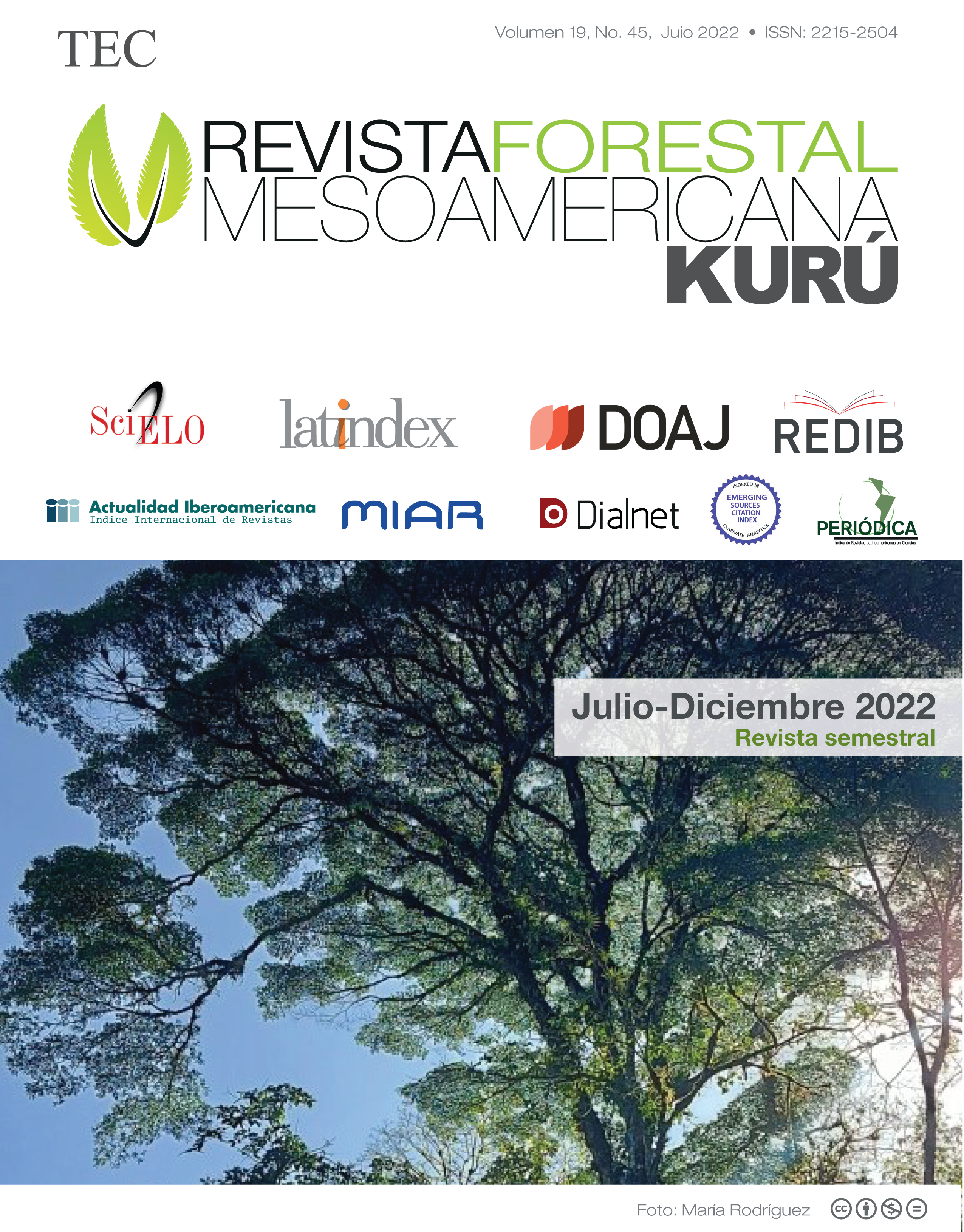Financial analysis and financing scenarios of the forest component in silvopastoril systems
Main Article Content
Abstract
This research aimed the determination of the forest component profitability in a new silvopastoril design system (SSP), along with financial scenarios analysis. The SSP model allowed the conciliation of both forest production tree species with livestock cycles. Operative financial analysis was based on teak and melina clonal cultivation, the most planted trees in the country. The new SSP design consisted in the establishment of wood production in 6m wide stripes, where the trees are planted in a 2.5 by 4m distance, in an irregular spatial distribution. It allows the establishment of 75 trees in 100 m of longitude. A high profitability in all financial indicators was determined for both species, based on a 6% interest rate. High Investment Model in melina obtained a PNV of ₡ 1, 131,349 (US$ 1 780), with a B/C relation of ₡ 2,68, and a IRR of 28,46 %. With teak PVN was ₡ 889,628 (US$ 1 400), a B/C of ₡ 2,41 and an IRR of 14,9%. In the Low Investment Model with melina, it was obtained a PNV of ₡ 400,000 (US$ 630), a B/C of ₡ 2,51, and an IRR of 27%. In teak it was obtained a NPV of ₡ 378,495 (US$ 600), with a B/C of ₡ 1,70, and an IRR of ₡ 12,18 %. The best financial scenario was a credit at 6% interest with a ESP.
Article Details

This work is licensed under a Creative Commons Attribution-NonCommercial-NoDerivatives 4.0 International License.
Revista Forestal Mesoamericana Kurú is licensed under CC BY-NC-ND 4.0
Al enviar un artículo a la Revista Forestal Mesoamericana kurú (RFMK), los autores ceden los derechos patrimoniales a la editorial de la RFMK una vez su manuscrito haya sido aprobado para publicación, autorizando a la RFMK a editarlo, reproducirlo, distribuirlo, y publicarlo en formato físico y/o electrónico. La titularidad de los derechos morales sobre los trabajos objeto de esta cesión seguirá perteneciendo a los autores.

